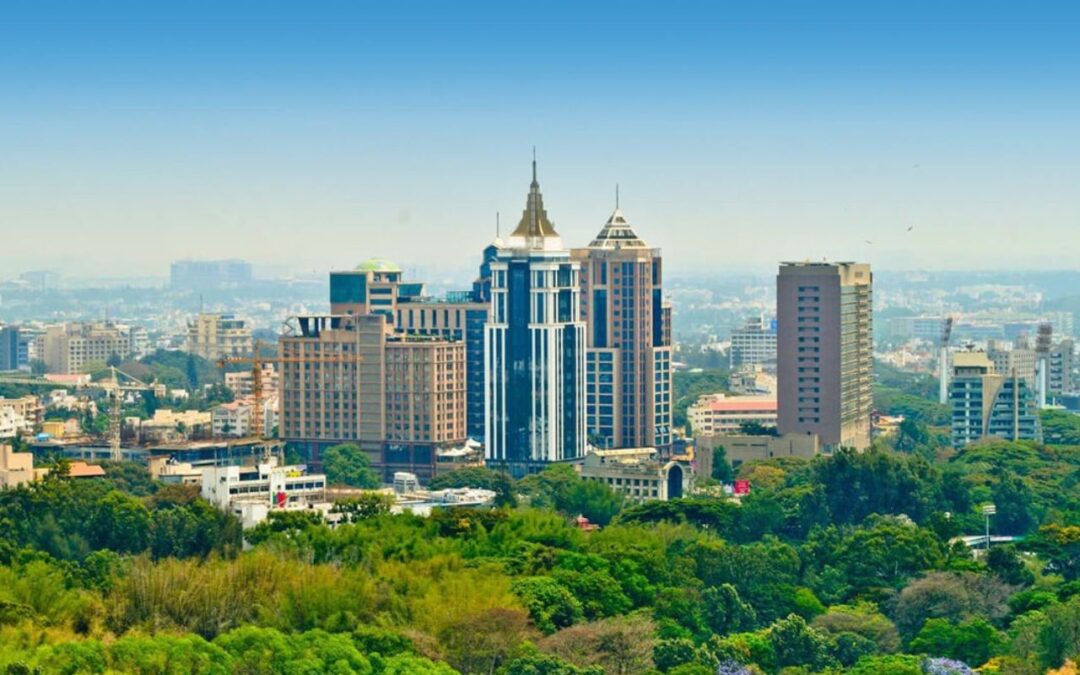Synopsis: Bangalore’s property market offers huge investment opportunities, driven by rapid growth and demand, but also presents risks tied to challenges and market volatility. This article explores key trends, top investment hotspots, and critical risks for investors to navigate.
Bangalore’s real estate sector will continue to be essential in 2025 due to the rapid expansion of the tech ecosystem, increased migration, and continuous demand for both residential and commercial space. The city remains an attractive destination for a variety of buyers, investors, and businesses looking for a vibrant city with many opportunities.
Current Market Update
- Price Growth: Bangalore’s real estate market reached a record peak in 2025 with 12,844 new launches in Q3 – reflecting 43% annual surge and 7% quarterly growth, with premium micro-markets seeing more substantial growth.
- Demand Areas of Interest: Increased demand in areas such as Whitefield, Sarjapur Road, North Bengaluru (Hebbal), and the outskirts of electronic city.
- Demand Drivers for Buyers & Investors: The city’s reputation as India’s Silicon Valley continues to attract professionals, increasing the demand for housing and commercial spaces. This trend directly impacts the future of Bangalore real estate investment.
- Policy & Infrastructure: Construction of metro lines, new ring roads, and enhancements to airport connectivity will also shape the new dynamics in the Bangalore property market.
Key Opportunities in Bangalore
- Emerging Micro-Markets: Emerging micro-markets, such as Devanahalli, Whitefield, and Kanakapura Road, are seeing good appreciation due to affordable pricing and new developments. These areas represent a better entry point, which is being driven by infrastructure development.
- Infrastructure Development: Metro expansion (Phases 2 and 3) improves connectivity and brings residential and commercial demand adjacent to metro stations. New expressways and new road projects alleviate traffic congestion, resulting in decentralized housing options.
- Rental Demand: Rentals grew 2-6% year-on-year, fastest in North Bangalore and near the airport. Strong rental demand continues in tech parks and start-up districts, particularly in Hebbal, MG Road, and Whitefield. The rise in new working patterns has also increased the viability of co-living and serviced apartments.
- Commercial Real Estate: The increased interest in Grade-A office spaces in conjunction with mid-flexible work models, supports new office development cycles in the IT corridors. New co-working spaces dedicated to start-ups and SMEs represent a strong leasing opportunity.
- Affordable and Mid Market Housing: First time buyers and job relocations, have seen a strong demand for affordable and mid-market housing, as buyers are seeking value for money residences. Yelahanka and Hennur Road have affordable inventory and represent up-and-coming markets.
- NRI Interest: Bangalore continues to attract NRIs seeking job opportunities, lifestyle, and Bangalore’s globalized environment, which is driving foreign investment in luxury and midmarket housing.
Also read: 8 Fastest Growing Areas in Bangalore That Investors and Homebuyers Are Eyeing in 2025
Risks and Challenges in Bangalore
- Soaring Housing Costs: Increasing costs in city centers are testing affordability limits, especially for salaried homebuyers. Entry-level housing is constantly being pushed to the fringes, resulting in longer commutes.
- Infrastructure Strains: Traffic jams and pollution in key areas are still significant concerns for residents with uneven development patterns benefiting select corridors. Issues with last-mile connectivity render some areas easy to access, despite recent investment.
- Market Saturation in Specific Areas: Some parts of the market, such as Whitefield and Sarjapur Road, may have too many luxury apartments, which can either reduce price points or lengthen the sale cycle.
- Sensitivity to Interest Rates: As of November 2025, home loan interest rates range from 7.35% to 9.10% per annum, with public sector banks offering the most competitive rates. Union Bank of India, Bank of India, and Bank of Maharashtra provide loans starting at 7.35%, while SBI offers 7.50% and major private banks range from 7.65% to 7.90%. Rising home loan interest rates could dampen buyer sentiment among first-time buyers and mid-income purchasers.
- Delivery Execution Delays: If some developers experience delayed delivery, they risk damaging their brand and invite some form of litigation, suggesting the need to approach purchasing far more thoughtfully.
What This Means for Buyers and Investors
- Buyers: This is best for those looking for long-term growth (5-10 years). Look for emerging micro-markets that have some form of infrastructure to support their growth.
- Investors: Should focus on trusted developers, those areas with high rental demand, and mixed-use developments.
- Striking the right balance between affordability and location is key to lowering risk in the current environment of high prices and government regulation.
- Buyers with short term goals should tread carefully while buyers with long-term intentions will benefit positively from metro expansions and growth in the business district development.
Future Outlook
Demand will rise as the tech sector grows and urban migration continues. Increasing adoption of green buildings, smart homes, and sustainable planning will push consumer preferences toward sustainability. Infrastructure upgrades like metro expansions and better airport access will reshape prime micro-markets, while new business and innovation districts will attract corporate investments and boost local economies.
Conclusion
Bangalore remains an amazing real estate investment opportunity with a multitude of opportunities for buyers and investors alike. The home buyer or investor with a thoughtful approach about location, developers’ reputation, and infrastructure will create sustainable wealth and lifestyle improvements.
Written By Rachna Rajput



